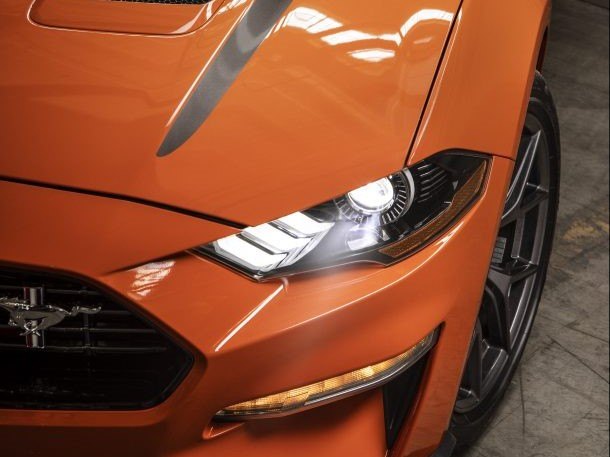Already Crunchy Ford Goes Even More Vegan

Always the innovator in creating car parts out of plants that aren’t trees, Ford Motor Company plans to burnish its green cred with a new building material: a composite created partly from dried coffee bean husks.
Following the automaker’s soybean experiments of the early 1940s, Ford adopted soybean-based foam for its seat cushions back in 2008. Now, coffee chaff will help add strength and lower energy use for the manufacture of headlight housings and other components. Its supplier partner on this project? McDonalds.
“The companies found that chaff can be converted into a durable material to reinforce certain vehicle parts. By heating the chaff to high temperatures under low oxygen, mixing it with plastic and other additives and turning it into pellets, the material can be formed into various shapes,” the automaker said in a statement Wednesday.
The process of roasting coffee separates the skin from the bean, after which it is discarded. Millions of pounds of the stuff then sits around, being of no use to anyone. McDonalds — which brews a far better cup of coffee than Tim Horton’s, by the way, and how about that sausage-and-egg McMuffin? Damn! — now expects to funnel much of its coffee waste to Ford.
“Like McDonald’s, Ford is committed to minimizing waste and we’re always looking for innovative ways to further that goal,” said Ian Olson, Mickey D’s senior director of global sustainability. “By finding a way to use coffee chaff as a resource, we are elevating how companies together can increase participation in the closed-loop economy.”
Already, such headlamp housings are going into the doomed Lincoln Continental, but their use will proliferate throughout the brand. Ford’s other partners on this effort are Varroc Lighting Systems, which supplies the headlamps, and Competitive Green Technologies, which processes the coffee chaff.
[Image: Ford]

More by Steph Willems
Latest Car Reviews
Read moreLatest Product Reviews
Read moreRecent Comments
- Kjhkjlhkjhkljh kljhjkhjklhkjh *Why would anyone buy this* when the 2025 RamCharger is right around the corner, *faster* with vastly *better mpg* and stupid amounts of torque using a proven engine layout and motivation drive in use since 1920.
- Kjhkjlhkjhkljh kljhjkhjklhkjh I hate this soooooooo much. but the 2025 RAMCHARGER is the CORRECT bridge for people to go electric. I hate dodge (thanks for making me buy 2 replacement 46RH's) .. but the ramcharger's electric drive layout is *vastly* superior to a full electric car in dense populous areas where charging is difficult and where moron luddite science hating trumpers sabotage charges or block them.If Toyota had a tundra in the same config i'd plop 75k cash down today and burn my pos chevy in the dealer parking lot
- Kjhkjlhkjhkljh kljhjkhjklhkjh I own my house 100% paid for at age 52. the answer is still NO.-28k (realistically) would take 8 years to offset my gas truck even with its constant repair bills (thanks chevy)-Still takes too long to charge UNTIL solidsate batteries are a thing and 80% in 15 minutes becomes a reality (for ME anyways, i get others are willing to wait)For the rest of the market, especially people in dense cityscape, apartments dens rentals it just isnt feasible yet IMO.
- ToolGuy I do like the fuel economy of a 6-cylinder engine. 😉
- Carson D I'd go with the RAV4. It will last forever, and someone will pay you for it if you ever lose your survival instincts.


































Comments
Join the conversation
The mice will love this with more food like items going into raw materials this is like a smorgasbord of feeding on electric wiring and getting a caffeine fix gnawing on the headlight bezels.
Add soybean based body parts and this will solve much of the problem of recycling vehicles with rats and mice feeding on them.